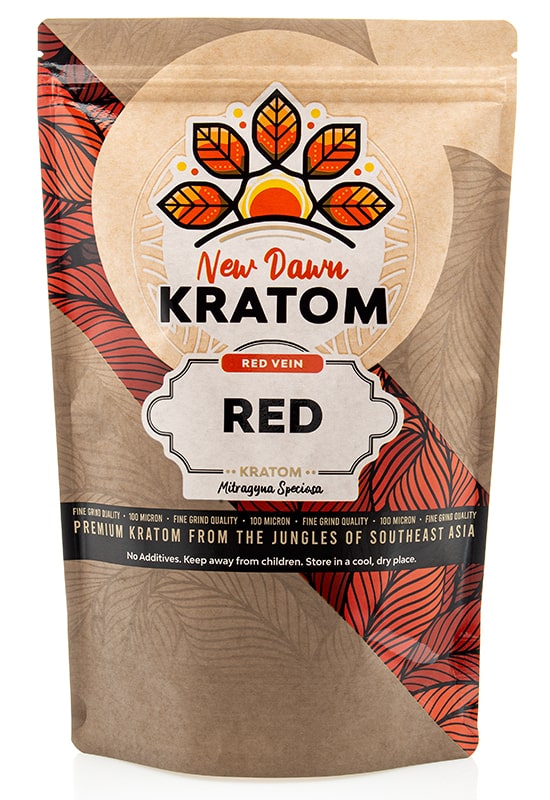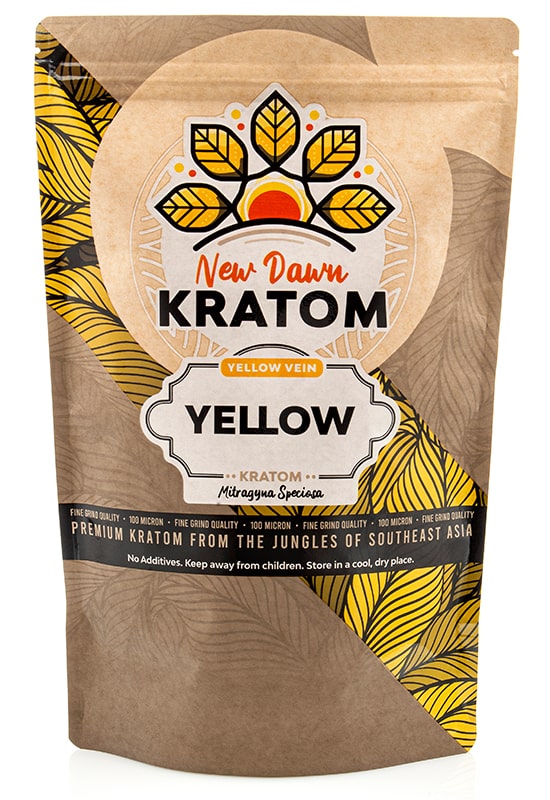Many kratom users today wonder about using oblate discs to consume their kratom powder. The main motivations for this is that oblate discs are cheap and completely mask the bitter taste of kratom powder. So follow us as we explore everything there is to know about oblate discs, how to fold them, their costs and some cheaper alternatives to choose from for those that are on a budget.
What are Oblate Discs?
Oblate discs, originating from the Dutch word “oblaat,” are Japanese edible films often used to consume powder for easier swallowing. These materials comprise an edible layer of starch film and were introduced to Japan in the early 19th century, primarily to wrap bitter medicines. Hence, it made it easier for the Japanese people to swallow the unpleasant powder. Because oblate discs are highly moisture-absorbent, confectioners also started using these edible films to pack candies so they don’t stick together because of Japan’s humid climate.
Materials Used in Making Oblate Discs
Starch-based materials are the main composition of oblate discs. The types may vary depending on the manufacturer, but the most common include rice starch, potato or corn starch, and tapioca starch.
Rice Starch
Rice starch is the most popular material because of its fine texture and good dissolution properties. The Japanese prefer this over other starch types, especially when wrapping sticky candies and bitter medicines. The main benefits of rice starch include being odorless, tasteless, and transparent, so you don’t have to worry about the oblate disc ruining the appearance or taste of the powder you’re consuming.
Potato and Cornstarch
Potato and corn starch share similar properties as rice starch. They also don’t have any taste and are highly soluble in moisture.
Tapioca Starch
Tapioca starch is another famous material because it is transparent and clear. This is an excellent alternative for people who are allergic to other types of starch.
Different Forms and Sizes Available
| Type of Oblate Disc | Description | Common Uses |
|---|---|---|
| Circular Oblate Discs | Thin, coin-sized discs that dissolve quickly when ingested. | Wrapping small quantities of powder or supplements. |
| Oblate Squares | Similar to circular discs but square, with a larger surface area. | Versatile applications for slightly larger amounts. |
| Oblate Pouches | Resemble small bags, can be filled and sealed. | Packing and consuming variable quantities of powders. |
| Oblate Cups | Tiny cup shapes for larger amounts. | Easier consumption of larger or unpleasant-tasting supplements. |
| Colored and Flavored Oblate Discs | Designed to be appealing, often mimics candy. | Making medicine consumption more appealing for children. |
The older versions are disc-shaped, with a circumference of 7 to 9 centimeters. As oblate discs dominated worldwide, including the USA, they became larger and square-shaped. Today, oblate discs are mainly utilized and imported to the United States to be used for herbs like kratom and other supplements in the health and fitness industry.
How to Use Oblate Discs
Using oblate discs to consume your kratom powder or any other supplement in powder form generally involves two methods: the Drop In Water and Dip In Water. Let’s differentiate them below.
Drop-In Water
- Lay a clean sheet of your oblate disc flat on a weighing scale. This is an important first step for accurate dosing of your kratom powder.
- Place your desired kratom powder on the disc’s center. If you’re using the disc-shaped ones, don’t exceed 3 grams as the film may tear because of overfilling.
- Use your fingers to pick up the oblate film from the corners and fold it to form a pouch. It should be narrow, so it’s easier to swallow the powder in 1 big motion.
- Drop the pouch in your glass of water, ensuring the oblate film gets wet before letting go. This won’t allow the powder to leak, forming a gel-like barrier around the powder for easier swallowing.
- Drink the water with the pouch submerged in one big gulp. You can also use a spoon to scoop up the floating pouch.
Dip-In Water
- Add your kratom powder on a sheet of oblate film. You may measure it using a weighing scale for precise dosing.
- Pick up the oblate sheet and fold it, forming a narrow pouch.
- Get a cup of water and dip the pouch with kratom. Be careful not to submerge it totally in water. After this, place it in your mouth and swallow it with water. The water serves as moisture, so the pouch with kratom slides down your pipe instead of sticking in the sides of your mouth.
The Best Techniques to Fold Oblate Papers
If you’re used to folding origami papers, folding oblate papers should be a piece of cake. There should be proper precision and care when folding so your oblate discs are neat, making it easier to use them when taking kratom powder. Here are tips for the best way to fold oblate papers:
- Always align the oblate paper edges before folding to help with precision.
- Gently fold the paper along the scored line. Move from one end to another so the paper won’t slip.
- Make a sharper fold using a bone folder or your fingers to smoothen it.
- Always fold on flat surfaces, and start with the most basic folds before trying out more complex ones.
- You can always refold when the folds are not perfectly aligned or when there are irregular creases.
Valuable Tips for Beginners
First-timers should always have the right materials, including a good-quality oblate disc that won’t tear easily when folding. Always make sure your workspace is clean, and remember to wash your hands before holding the film paper.
Sealing oblate discs tightly is as important as proper folding. Always twist or pinch the edges of the oblate paper after folding to secure the kratom powder inside to prevent leakage. Ultimately, you’ll get the hang of folding oblate papers, so learn to be patient.
How Much Do Oblate Discs Cost?
One advantage of using oblate discs for consuming kratom powder is affordability. Prices for 1 pack of 200 oblate discs typically range from $5 to $20, depending on the brand and whether you’re buying online or in Japanese specialty stores. Amazon also has a wide variety of oblate papers, and the prices may also depend on how many you’re buying. You should also consider several factors, including the following:
- Product brand: The more popular or specialty the brand is, the more expensive the price gets.
- Material: Oblate discs made of rice paper are cheaper than those made from materials with extra features like flavoring or added strength.
- Quantity: Some stores may give discounts for those buying in bulk.
- Additional Features: Specialty brands may offer oblate papers with additional features like flavor and improved durability. These may increase the cost.
Oblate Discs Alternatives
If you can’t find available oblate discs, you can use other options. The costs of these alternatives are comparable to conventional oblate papers made of rice paper. For instance, edible film sheets may work like oblate papers, costing around $5 to $20 for a pack of 100.
Rice Paper – A Cheaper Alternative
A popular alternative to your oblate discs is rice paper, a cheap material traditionally made from the rice paper plant. This thin, edible, and pliable material is usually used in Vietnamese spring rolls. Rice paper has a delicate texture and turns translucent when soaked in water. Besides cooking, some individuals also use rice paper in arts, especially in calligraphy and painting.
Pros and Cons of Using Rice Paper
Suppose you decide to use rice paper instead of oblate discs. Will it negatively impact your kratom consumption? Learn about the pros and cons of using this cheaper alternative below.
| Aspect | Rice Paper | Oblate Discs |
|---|---|---|
| Cost | Cheaper, more budget-friendly | Typically more expensive |
| Versatility | Used in culinary, arts, and crafts | Mainly used for ingesting powders or supplements |
| Availability | Widely available, especially in areas with Asian influence | Less widely available; more niche product |
| Durability | Less durable when wet; can tear easily | More durable against moisture |
| Taste and Texture | Slight taste and noticeable texture | Usually tasteless and smoother, better for supplements |
When Are Rice Papers Preferable?
Rice papers are preferred over conventional oblate discs when you want cheaper materials. However, the price difference isn’t that much of a big deal, so you may still opt for the usual Japanese oblate papers for a full experience.
Health and Safety Considerations
Oblate discs or rice paper may be thin and delicate, but safety considerations are still important, especially when allergic to the ingredients or substances used. Remember that oblate discs are made from starch, while rice paper is typically made from rice flour. Make sure you aren’t allergic to these before incorporating them into your kratom consumption. It’s also best to check each ingredient of what you’re using and look for preservatives that could be dangerous.
To prevent contamination, always maintain cleanliness in your work area where you’ll be manipulating kratom and your oblate papers. Oblate discs and rice paper are also best stored at room temperature because environments that are too hot may degrade their composition.
Lastly, always practice safe dosing when consuming kratom. Stay hydrated, and don’t mix it with other substances to minimize the risks. And, of course, consult your physician when you have an existing medical condition.










